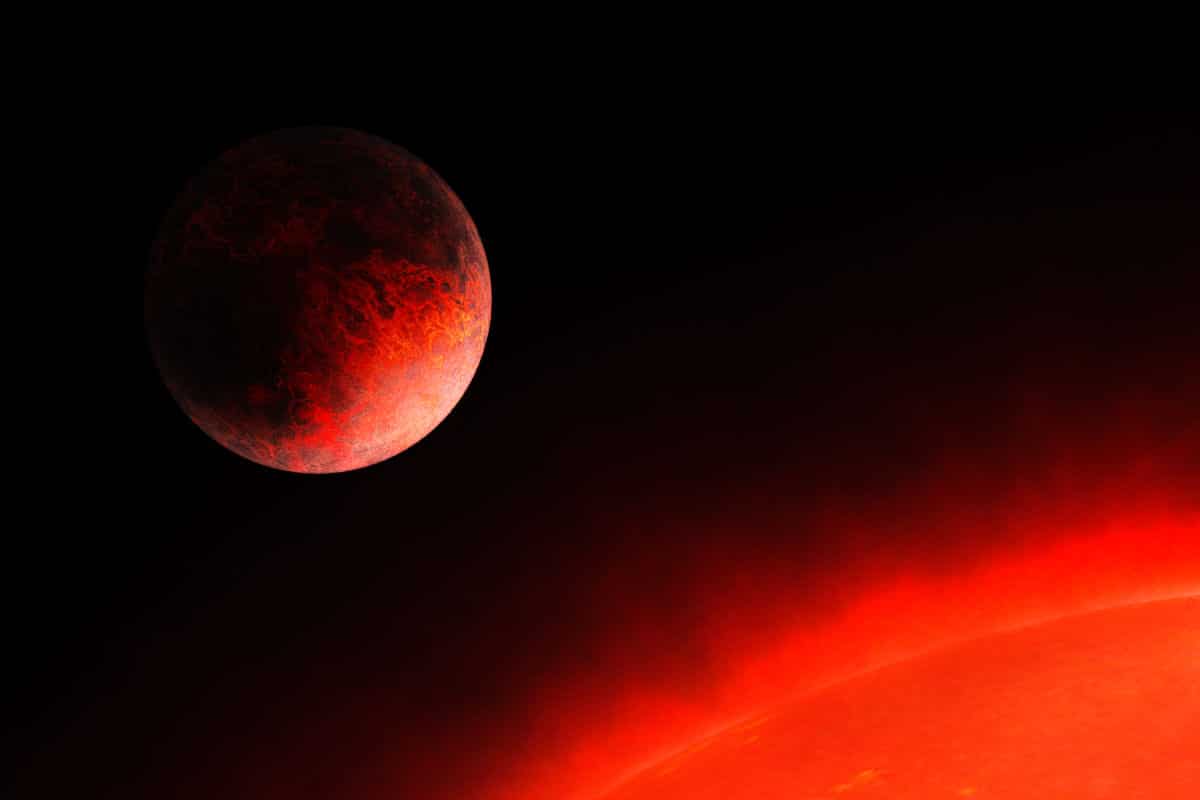
With a mass of only half the mass of the earth, GJ 367b is a true lightweight.
Thanks to extensive searches, we know that thousands of so-called exoplanets can be found outside our solar system. A quarter of a century after the first discovery, however, the focus has now shifted from hunting exoplanets to accurately characterizing these worlds. For example, do they resemble Earth, or are they strange and exotic planets? In a new study, researchers looked at GJ 367b; a planet orbiting a red dwarf star. And the findings show that astronomers have stumbled upon a true lightweight here.
Transit method
Many of the exoplanets known to us were discovered using the transit method. This involves telescopes staring at stars for long periods, hoping that those stars’ brightness will periodically decrease slightly. Such a decrease can be caused by a planet moving in front of the star and temporarily blocking part of the star light. GJ 367b was also discovered by planet hunter TESS using the transit method. And now the exploration of this world continues. Because today, thanks to ingenious techniques, it is possible to accurately characterize most exoplanets.
GJ 367b
What we know so far about GJ 367b is that the planet has a diameter of about 9000 kilometers. With these dimensions, the exoplanet is slightly larger than our neighbor Mars. The planetary system is located just under 31 light-years from Earth, making it ideal for further research.
Mass
Astronomers have now managed to determine the mass of GJ 367b, among other things. And compared to other planets outside our solar system, GJ 367b is as light as a feather. For example, the planet has a mass of only half the mass of the Earth. This makes GJ 367b one of the lightest of the nearly 5000 exoplanets we know today.
Super fast
Not only is GJ 367b as light as a feather, the planet is also super fast. For example, it takes the planet about eight hours to complete one orbit around its parent star. With this orbital period of only a third of an Earth day, the planet belongs to the so-called ultra short period planets: planets that take less than 24 hours to orbit their parent star. “We already know a few, but their origin is currently unknown,” said researcher Kristine Lam. “By measuring the precise fundamental properties of USP planets, we can get a glimpse of their formation and evolution history.”
blazing hot
GJ 367b orbits the star GJ 367; a red dwarf star only half the size of our sun. Due to the exoplanet’s proximity to its parent star, GJ 367b is exposed to an extremely high level of radiation, more than 500 times stronger than the amount of radiation bombarding the Earth. Temperatures are therefore very high: up to 1500 degrees Celsius. At such scorching temperatures, all rocks and metals present melt. It means that GJ 367b – unfortunately – cannot be considered a second earth.
rocky
Now that the researchers have a better understanding of GJ 367b’s radius and mass, they can also draw conclusions about its internal structure. And according to the researchers, the planet is somewhat like Mercury. GJ 367b turns out to be rocky and has a high density. “The high density indicates that the planet has an iron core,” said researcher Szilárd Csizmadia. “These properties are similar to those of Mercury, which differs from other terrestrial planets in our solar system by its disproportionately large iron and nickel core.”
The study shows that it is possible to accurately determine the properties of even the smallest and least massive exoplanets out there. Such studies are very interesting; in fact, it’s key to understanding how terrestrial planets form and evolve, the researchers say. Research therefore continues. In addition, red dwarf stars are known to have an average of two to three planets orbiting. And so it could very well be that GJ 367b has some equally fascinating brothers.
Source material:
“Ultra-light and super-fast – Discovery of sub-Earth planet GJ 367b– German Aerospace Center DLR Institute of Planetary Research (via EurekAlert)
Image at the top of this article: SPP 1992 (Patricia Klein)